Showing Spotlights 41 - 48 of 643 in category All (newest first):
 Researchers develop innovative selective-area graphoepitaxy technique to simultaneously control orientation and position of self-assembling organic semiconductor nanowires, enabling seamless integration into electronic devices.
Researchers develop innovative selective-area graphoepitaxy technique to simultaneously control orientation and position of self-assembling organic semiconductor nanowires, enabling seamless integration into electronic devices.
Jan 11th, 2024
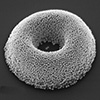 Advanced nanoengineering technique crafts intricate 3D plasmonic structures, offering new possibilities in light manipulation at the nanoscale, with wide-ranging applications in technology and biomedicine.
Advanced nanoengineering technique crafts intricate 3D plasmonic structures, offering new possibilities in light manipulation at the nanoscale, with wide-ranging applications in technology and biomedicine.
Jan 10th, 2024
 Recent advances establish stimuli-responsive hydrogels as an optimal platform for long-sought reconfigurable photonic systems with tunable optical properties and dynamic control over light's behavior.
Recent advances establish stimuli-responsive hydrogels as an optimal platform for long-sought reconfigurable photonic systems with tunable optical properties and dynamic control over light's behavior.
Jan 9th, 2024
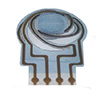 Novel electrostatic 'taxel' actuators that zip closed provide the force and displacement to dynamically create pressable buttons on touchscreens and other surfaces, restoring realistic tactile feedback.
Novel electrostatic 'taxel' actuators that zip closed provide the force and displacement to dynamically create pressable buttons on touchscreens and other surfaces, restoring realistic tactile feedback.
Dec 18th, 2023
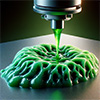 Researchers formulated an adhesive, shear-thinning bioink that maintains structural integrity when 3D printed underwater. This technology significantly expands bioprinting capabilities for surgical tissue grafts.
Researchers formulated an adhesive, shear-thinning bioink that maintains structural integrity when 3D printed underwater. This technology significantly expands bioprinting capabilities for surgical tissue grafts.
Dec 15th, 2023
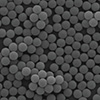 Researchers have developed a dramatically faster, simpler nanoparticle assembly technique using an ultrasonic spray nozzle to generate a nanoparticle-laden aerosol. This facilitates rapid fabrication of highly ordered nanoparticle monolayers over large surface areas, unlocking applications from flexible electronics to next-gen solar cells.
Researchers have developed a dramatically faster, simpler nanoparticle assembly technique using an ultrasonic spray nozzle to generate a nanoparticle-laden aerosol. This facilitates rapid fabrication of highly ordered nanoparticle monolayers over large surface areas, unlocking applications from flexible electronics to next-gen solar cells.
Dec 9th, 2023
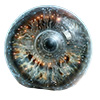 Leveraging soft electronics and organic-inorganic materials, researchers create a durable artificial retina wrapped around a fiber exhibiting striking similarities to biological vision. This advance opens the door to sensory-enhancing wearable technologies.
Leveraging soft electronics and organic-inorganic materials, researchers create a durable artificial retina wrapped around a fiber exhibiting striking similarities to biological vision. This advance opens the door to sensory-enhancing wearable technologies.
Dec 7th, 2023
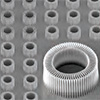 Researchers developed a scalable approach to manufacture intricate, electrochemically actuated carbon nanotube structures that can reversibly change shape through lithium alloying reactions controlled by simple electrical signals.
Researchers developed a scalable approach to manufacture intricate, electrochemically actuated carbon nanotube structures that can reversibly change shape through lithium alloying reactions controlled by simple electrical signals.
Dec 6th, 2023
 Researchers develop innovative selective-area graphoepitaxy technique to simultaneously control orientation and position of self-assembling organic semiconductor nanowires, enabling seamless integration into electronic devices.
Researchers develop innovative selective-area graphoepitaxy technique to simultaneously control orientation and position of self-assembling organic semiconductor nanowires, enabling seamless integration into electronic devices.
 Subscribe to our Nanotechnology Spotlight feed
Subscribe to our Nanotechnology Spotlight feed





